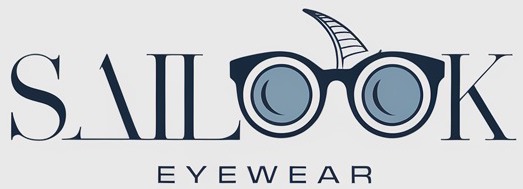The eyewear industry is constantly evolving, with new brands emerging and established players continuing to innovate. This article explores the leading eyewear companies in 2025, examining their market strategies, innovations, and how they maintain their competitive edge. Whether you’re a retailer, distributor, or a brand looking to partner with top eyewear manufacturers, this article will give you a comprehensive overview of the industry’s top players and what makes them stand out.

1. Who Are the Leading Eyewear Companies in 2025?
The eyewear industry is dominated by a few key players who have solidified their positions through years of innovation, strong branding, and strategic acquisitions. In 2025, the top eyewear companies include global giants like Luxottica, Essilor, and Safilo, which have a significant influence on both the luxury and mass-market eyewear segments.
But here’s the kicker… these companies are not only growing through acquisitions but are also pushing the envelope in terms of technology and sustainability. Their success lies in their ability to adapt to market trends and consumer demands.
Luxottica, the largest eyewear manufacturer globally, leads the pack with a portfolio of high-end brands such as Ray-Ban, Oakley, and Vogue Eyewear. Essilor, on the other hand, focuses heavily on optical lenses and vision correction, recently merging with Luxottica to create a comprehensive eyewear giant. Meanwhile, Safilo, with its own luxury brands like Dior and Fendi, continues to make waves in the high-fashion eyewear sector.
These companies dominate the market by offering a mix of cutting-edge eyewear technologies, premium design, and global reach. Their constant innovation in both eyewear frames and lenses, coupled with their ability to cater to diverse consumer needs, solidifies their positions as industry leaders.
Table: Leading Eyewear Companies in 2025
| Company | Market Share | Key Brands | Main Focus |
|---|---|---|---|
| Luxottica | 15% | Ray-Ban, Oakley, Persol, Vogue Eyewear | Fashion, Technology |
| Essilor | 13% | Essilor Lenses, Ray-Ban (via Luxottica) | Vision Correction, Lenses |
| Safilo | 7% | Dior, Fendi, Tommy Hilfiger | Luxury Eyewear |
| Warby Parker | 3% | Warby Parker | Direct-to-Consumer, Sustainability |
| Maui Jim | 2% | Maui Jim | Premium Sunglasses |
2. What Makes a Top Eyewear Company Successful?
The success of an eyewear company hinges on several key factors that determine whether they can capture market share and maintain consumer loyalty. This is where it gets interesting… it’s not just about having a great product, but also about brand positioning, customer experience, and innovation.
A major factor is the ability to adapt to consumer preferences and market trends. Top eyewear companies stay ahead of the curve by embracing digital transformation, offering customizable eyewear, and creating personalized shopping experiences. For example, Warby Parker has made a name for itself by offering a seamless online shopping experience with home try-on options, catering to the growing demand for convenience.
Another factor is the ability to maintain strong relationships with suppliers and partners, which ensures a consistent supply of high-quality materials and timely production. Successful eyewear companies also focus heavily on branding, with a clear identity that resonates with their target market. Whether it’s through luxury collaborations or offering affordable yet stylish eyewear, top companies manage to carve out their own niche in a crowded market.
3. How Do Eyewear Companies Compete in the Global Market?
In the global eyewear market, companies must navigate various challenges such as changing consumer preferences, economic fluctuations, and rising competition. What’s the real story? It’s all about balancing innovation, quality, and strategic pricing to appeal to a global audience.
Global competition is fierce, with eyewear companies looking to expand into new markets and offer localized products. Companies such as Warby Parker and Zenni Optical have disrupted traditional eyewear retail by offering affordable eyewear through direct-to-consumer models. This approach has allowed them to tap into growing markets in regions like North America and Europe while avoiding the overhead costs of traditional retail stores.
On the other hand, established companies like Luxottica and Essilor focus on expanding their reach through strategic partnerships and acquisitions. Their vast networks of optical stores, online platforms, and brand collaborations help them stay competitive in a crowded global marketplace.
Table: Strategies for Competing in the Eyewear Market
| Strategy | Example | Impact |
|---|---|---|
| Direct-to-Consumer Model | Warby Parker, Zenni | Reduced costs, increased accessibility |
| Brand Expansion & Acquisitions | Luxottica, Essilor | Expanded global reach, diversified offerings |
| Online Shopping Integration | Ray-Ban, Oakley | Increased convenience and customer reach |
4. What Are the Largest Eyewear Companies in the World?
When we look at the largest eyewear companies by revenue, market share, and brand recognition, a few names consistently dominate the rankings. Ready for the good part? These companies have maintained their top positions by focusing on innovation, expanding product lines, and acquiring smaller competitors.
Luxottica remains the undisputed leader, with its massive portfolio of eyewear brands and retail stores worldwide. The company’s continued success can be attributed to its global distribution channels, marketing strategies, and leadership in eyewear technology. Essilor, after merging with Luxottica, has further solidified its dominance in the market, especially with its focus on lens technology and vision correction.
Safilo, although smaller than Luxottica, continues to hold a significant position in the luxury segment. The company’s collaboration with high-fashion brands and its ability to offer exclusive designs have ensured its place among the largest players in the industry.
Table: Largest Eyewear Companies by Market Share
| Company | Market Share | Revenue (2025) | Key Products |
|---|---|---|---|
| Luxottica | 15% | $15 Billion | Eyewear Frames, Lenses |
| Essilor | 13% | $13 Billion | Prescription Lenses, Eyewear |
| Safilo | 7% | $2.5 Billion | Luxury Eyewear, Sunglasses |
| Warby Parker | 3% | $1.8 Billion | Prescription Eyewear |
5. How Have Eyewear Companies Adapted to Consumer Trends?
Consumer trends are constantly changing, and eyewear companies must stay ahead of the curve to remain relevant. This is where it gets interesting… today’s consumers are looking for more than just functional eyewear; they want products that reflect their personal style, values, and lifestyle.
Eyewear companies have adapted by offering a wider range of designs, colors, and customizable options. Companies like Warby Parker and Zenni Optical have successfully embraced the trend of online shopping, offering home try-ons and virtual fittings to meet the needs of the modern consumer. At the same time, luxury eyewear brands continue to evolve with premium collections and limited-edition collaborations with famous designers and celebrities.
Sustainability is another growing trend that eyewear companies have adopted. Many top brands now use eco-friendly materials, like recycled acetate and biodegradable packaging, to appeal to environmentally conscious consumers.
Table: Popular Eyewear Trends in 2025
| Trend | Example | Consumer Appeal |
|---|---|---|
| Customization & Personalization | Warby Parker’s Home Try-On | Personalized experience, convenience |
| Sustainable Eyewear | Eco-friendly frames | Appeals to environmentally-conscious buyers |
| Designer Collaborations | Ray-Ban x Off-White | Luxury, exclusivity, and fashion-forward style |
6. What Role Does Innovation Play in the Success of Eyewear Companies?
Innovation is at the heart of the eyewear industry’s continued growth. But here’s the kicker… it’s not just about making eyewear that looks good—it’s about offering functional products that enhance the wearer’s experience.
Companies like Essilor and Luxottica are leading the way in lens technology, offering high-performance lenses for different needs, such as blue light blocking and anti-reflective coatings. At the same time, eyewear companies are exploring new materials, such as titanium and carbon fiber, to create lightweight yet durable frames. Innovations in augmented reality (AR) and virtual try-ons are also revolutionizing the consumer shopping experience, allowing people to try on eyewear virtually before making a purchase.
These innovations have not only driven the growth of eyewear companies but also shaped the future of the industry. Companies that are quick to adopt new technologies and stay ahead of consumer needs are setting themselves up for long-term success.
7. How Are Eyewear Companies Embracing Sustainability?
Sustainability has become a key factor in consumer purchasing decisions, and eyewear companies are taking notice. What’s the real story? Companies are increasingly adopting eco-friendly practices to align with the values of today’s consumers.
Many eyewear companies are turning to sustainable materials, such as recycled acetate, bamboo, and plant-based plastics, to create their frames. Brands like Warby Parker and Ray-Ban are also exploring ways to reduce waste in the production process, including offering repair services for old eyewear. In addition to using sustainable materials, companies are adopting environmentally friendly packaging and working toward reducing their carbon footprint.
Table: Sustainable Practices in the Eyewear Industry
| Company | Sustainability Initiative | Impact |
|---|---|---|
| Warby Parker | Recycled acetate frames, home try-on service | Reduced waste, increased accessibility |
| Ray-Ban | Eco-friendly packaging, recycling programs | Lower environmental impact |
| Maui Jim | Plant-based frame materials, eco packaging | Sustainable product offerings |
8. How Do Eyewear Companies Handle Production and Manufacturing?
Production and manufacturing play a crucial role in the success of eyewear companies. Ready for the good part? Top eyewear companies maintain high-quality standards by investing in advanced manufacturing processes and managing their supply chains effectively.
Many eyewear companies have integrated cutting-edge technologies in their production lines, using precision machinery to create frames that meet exact specifications. In-house manufacturing helps companies maintain strict quality control and reduce the risk of defects. At the same time, companies like Luxottica also work with a network of suppliers and manufacturers to produce eyewear at scale, ensuring they can meet the global demand for their products.
Table: Eyewear Manufacturing Process
| Stage | Description | Key Benefit |
|---|---|---|
| Material Sourcing | High-quality materials like acetate, titanium | Ensures durability and luxury appeal |
| Frame Production | Precision machining for frame shapes | Guarantees consistent quality |
| Quality Control | Rigorous testing for defects | Maintains high standards |
9. What Are the Best-Selling Eyewear Brands in 2025?
The best-selling eyewear brands in 2025 cater to various market segments, from high-fashion luxury to affordable and practical eyewear. What’s the real story? These brands have mastered the art of offering eyewear that meets both functional needs and personal style preferences.
Ray-Ban continues to be one of the top sellers in both the fashion and functionality sectors. Oakley is a leading choice for athletes and outdoor enthusiasts, thanks to its performance eyewear. Meanwhile, Warby Parker has become a top choice for those looking for stylish yet affordable prescription eyewear.
Table: Best-Selling Eyewear Brands in 2025
| Brand | Market Segment | Best-Selling Product |
|---|---|---|
| Ray-Ban | Fashion, Luxury | Wayfarer, Aviator |
| Oakley | Sports, Outdoor | Jawbreaker, Radar EV |
| Warby Parker | Affordable, Stylish | Home Try-On, Custom Eyewear |
10. How Do Eyewear Companies Target Different Demographics?
Eyewear companies need to consider different demographics when designing and marketing their products. This is where it gets interesting… each age group, lifestyle, and region has specific preferences when it comes to eyewear.
Young adults often gravitate toward trendy, stylish frames that align with their fashion sense, while older adults tend to prioritize comfort and functionality. Sports eyewear companies like Oakley have tailored their products for athletes, offering frames designed for performance and durability.
Table: Demographics and Eyewear Preferences
| Demographic | Eyewear Preference | Top Brands |
|---|---|---|
| Young Adults | Trendy, Fashion-forward frames | Ray-Ban, Warby Parker |
| Older Adults | Comfort, Vision correction | Essilor, Maui Jim |
| Athletes | High-performance, Durable | Oakley, Nike Eyewear |
11. How Are Eyewear Companies Using Technology to Improve Customer Experience?
Technology plays a significant role in transforming the eyewear shopping experience. But here’s the kicker… it’s not just about improving the product itself, but also enhancing the way consumers interact with eyewear brands.
Companies like Warby Parker have integrated virtual try-on technology into their websites and mobile apps, allowing customers to see how glasses look on their face without visiting a store. Other companies are using AI-powered tools to recommend eyewear styles based on customer preferences and face shapes.
Table: Technology Innovations in Eyewear
| Technology | Description | Impact on Customer Experience |
|---|---|---|
| Virtual Try-On | AR technology to try on eyewear virtually | Enhanced convenience, reduced returns |
| AI-powered Recommendations | Personalized eyewear suggestions based on data | Increased satisfaction and engagement |
12. What Are the Marketing Strategies of Leading Eyewear Companies?
Leading eyewear companies use innovative marketing strategies to stay relevant and build brand loyalty. What’s the real story? It’s about creating strong connections with consumers through targeted campaigns and partnerships.
Many eyewear companies have embraced influencer marketing, collaborating with fashion influencers to reach their target demographic. Social media platforms like Instagram are key channels for marketing eyewear, as they allow companies to showcase their products in lifestyle settings.
Table: Marketing Strategies in the Eyewear Industry
| Strategy | Example | Effectiveness |
|---|---|---|
| Influencer Partnerships | Warby Parker x Fashion Bloggers | Increased brand awareness |
| Social Media Advertising | Ray-Ban Instagram Ads | Higher customer engagement |
13. How Are Eyewear Companies Adjusting to the Changing Retail Landscape?
The retail landscape for eyewear is changing rapidly, with many brands adapting to new consumer behaviors. Ready for the good part? It’s all about blending digital and physical retail experiences to meet the needs of today’s shopper.
Eyewear companies are focusing on online shopping experiences, integrating advanced filtering options, virtual try-ons, and customer reviews to make the process more convenient. At the same time, brick-and-mortar stores are adopting hybrid models that combine in-store experiences with e-commerce capabilities.
Table: Eyewear Retail Models in 2025
| Model | Description | Advantages |
|---|---|---|
| E-Commerce | Online stores with virtual try-on and home delivery | Convenience, global reach |
| Brick-and-Mortar | Physical stores with integrated e-commerce features | In-person experience, personal service |
14. How Do Eyewear Companies Ensure the Quality of Their Products?
Quality assurance is critical in the eyewear industry, as poor-quality products can lead to dissatisfaction and brand damage. What’s the real story? Companies implement rigorous quality control standards to ensure their products meet high expectations.
Companies like Essilor and Luxottica adhere to international certifications such as CE and FDA for eyewear quality. These certifications ensure that products are safe, durable, and perform as expected. Additionally, many eyewear companies conduct extensive testing for durability, scratch resistance, and lens clarity.
Table: Eyewear Quality Control Process
| Stage | Process | Purpose |
|---|---|---|
| Material Selection | Using high-quality, durable materials | Ensures product longevity |
| Testing & Certification | CE, FDA, and ISO testing standards | Guarantees product safety |
15. What Does the Future Hold for the Eyewear Industry?
The future of the eyewear industry looks promising, with advancements in technology, sustainability, and customization. This is where it gets interesting… the continued evolution of consumer demands and technological innovations will likely drive further growth in the sector.
Eyewear companies are investing in new materials, augmented reality, and artificial intelligence to enhance their products and customer experiences. As more consumers demand eco-friendly products, sustainability will continue to be a major focus for leading eyewear brands.
Table: Future Trends in Eyewear
| Trend | Description | Impact on the Industry |
|---|---|---|
| Smart Glasses | Eyewear integrated with technology | Revolutionizing the eyewear experience |
| Sustainable Practices | Increased focus on eco-friendly materials | Improved brand reputation and customer loyalty |
Conclusion
In 2025, the eyewear industry continues to evolve with new technologies, sustainable practices, and ever-changing consumer demands. Leading eyewear companies such as Luxottica, Essilor, and Warby Parker are shaping the future with their innovative products and strategies. By staying competitive through customization, embracing digital advancements, and prioritizing sustainability, these companies are not only leading the market but also setting trends for years to come. As the industry moves forward, companies that can adapt to these shifts will thrive and redefine what consumers expect from their eyewear brands.
FAQ Section
Q1: What is the largest eyewear company in the world?
Luxottica is the largest eyewear company globally, with a vast portfolio of eyewear brands and a significant market share.
Q2: How do eyewear companies stay competitive in the market?
Eyewear companies stay competitive by embracing innovation, diversifying their product offerings, and focusing on sustainability.
Q3: How does sustainability affect the eyewear industry?
Sustainability influences the eyewear industry by pushing companies to use eco-friendly materials and reduce waste in their production processes.
Q4: How have eyewear companies adapted to online shopping trends?
Eyewear companies have embraced e-commerce platforms, virtual try-on features, and personalized shopping experiences to meet the demands of online shoppers.
Q5: What trends should eyewear companies expect in the future?
Eyewear companies should expect increased demand for smart glasses, sustainable materials, and personalized eyewear experiences in the coming years.

